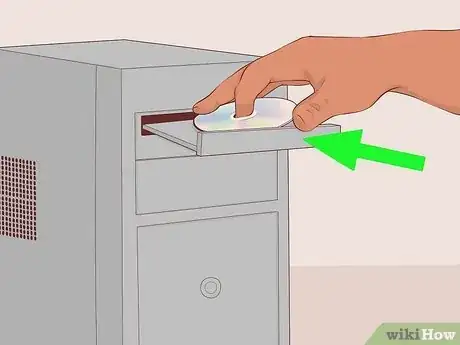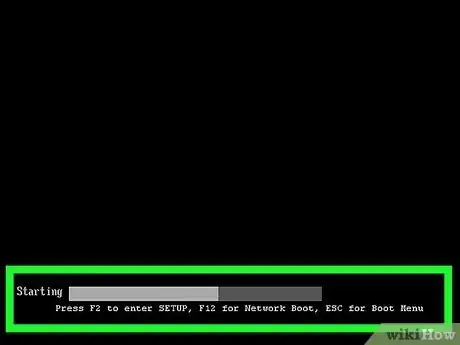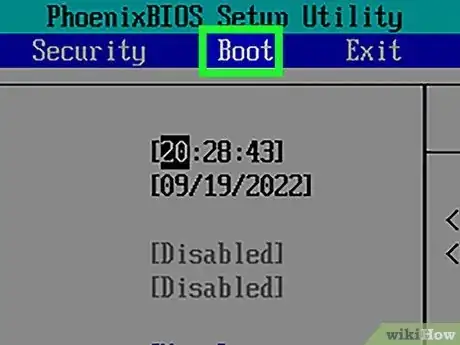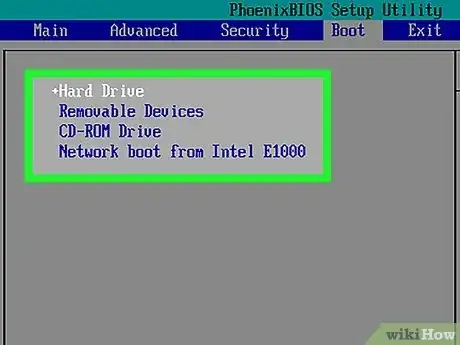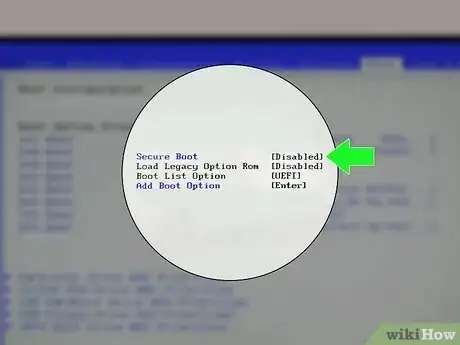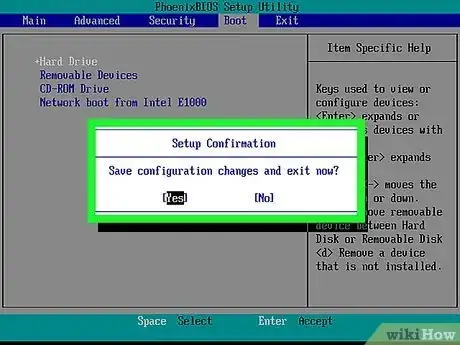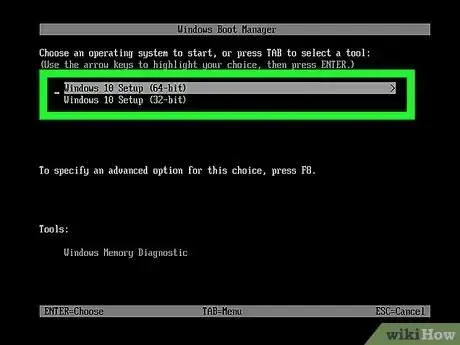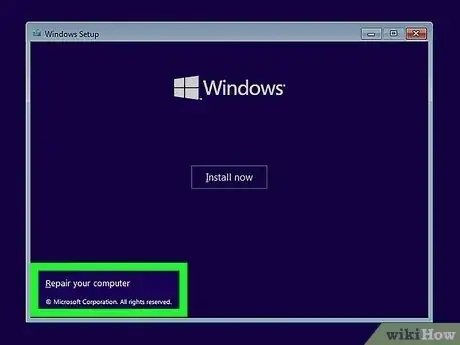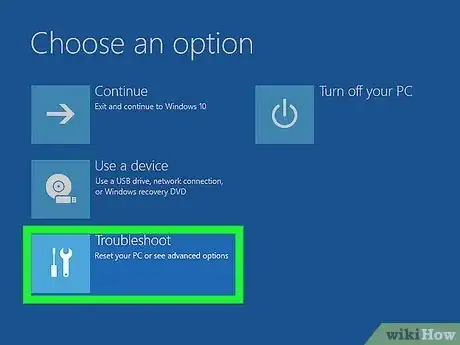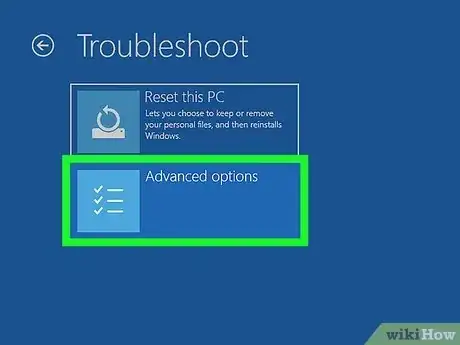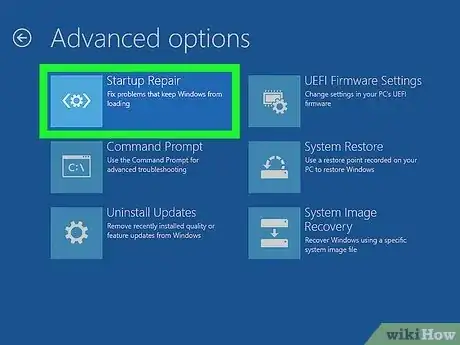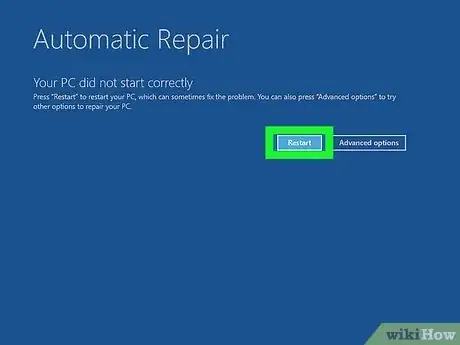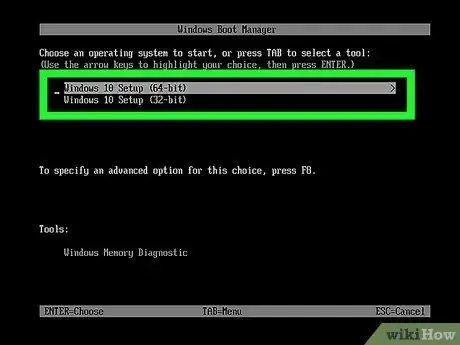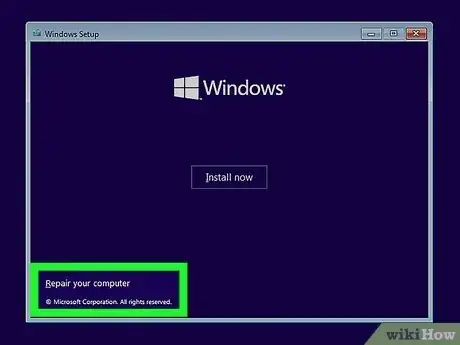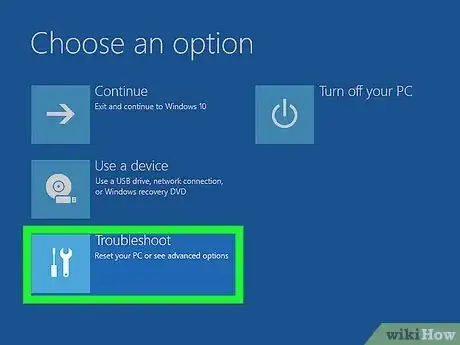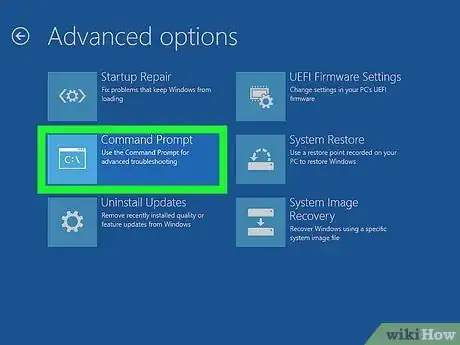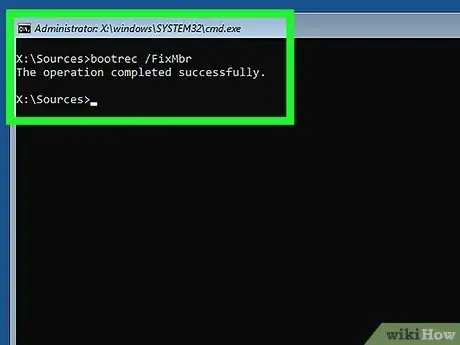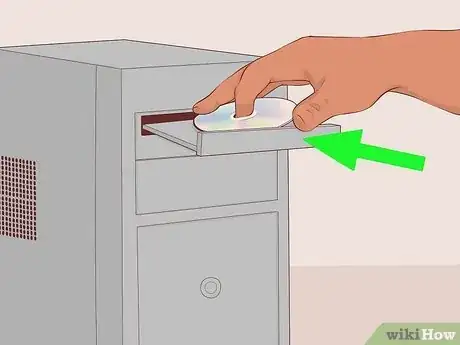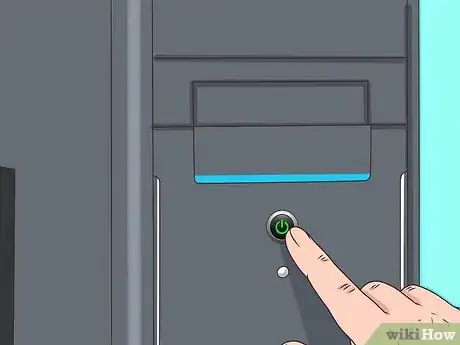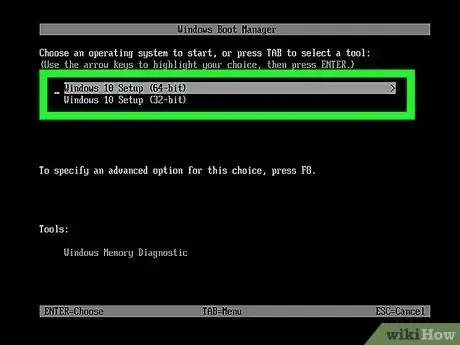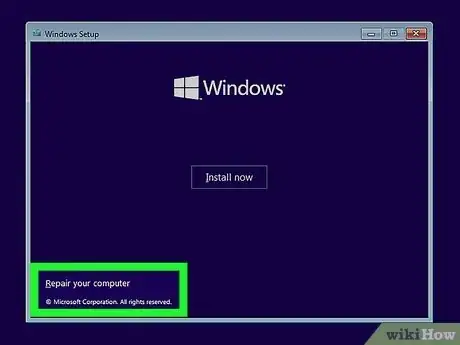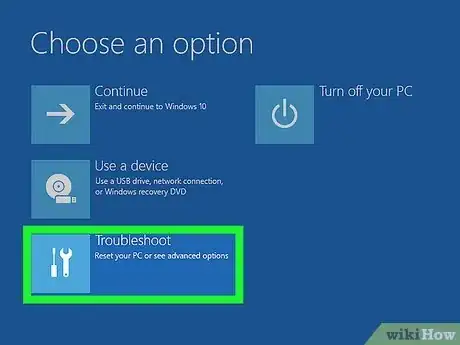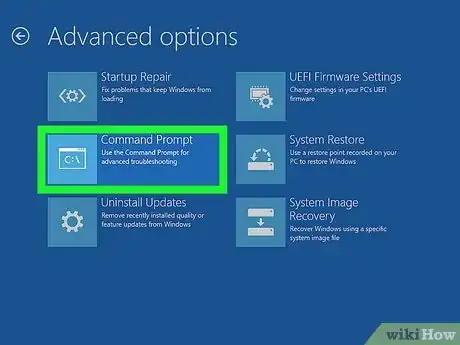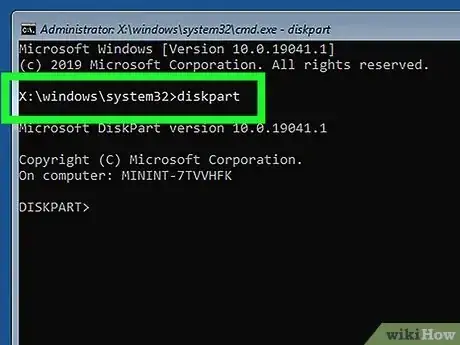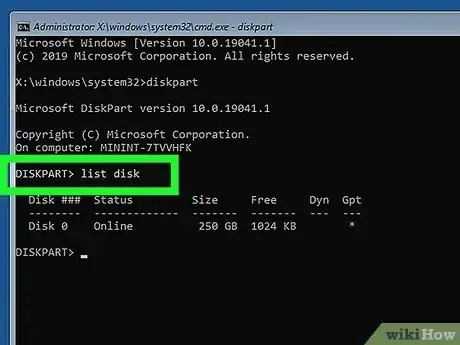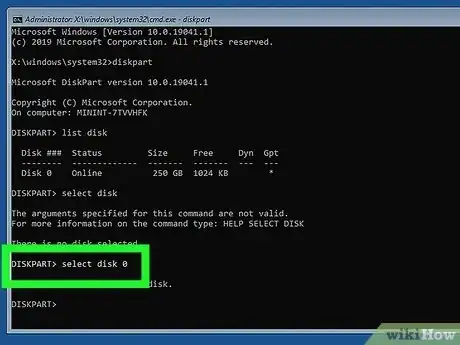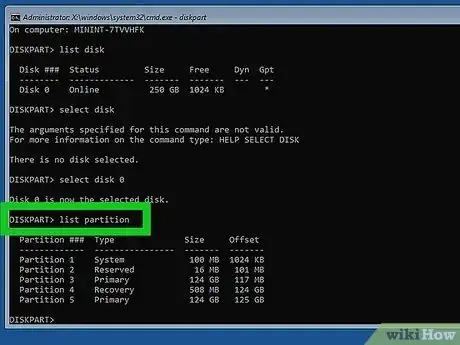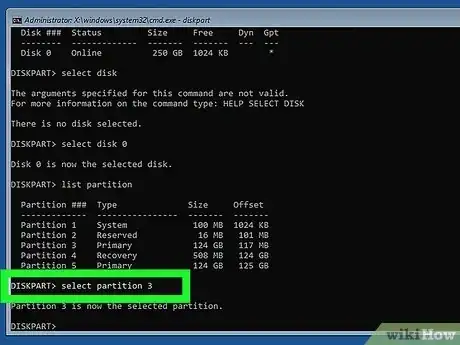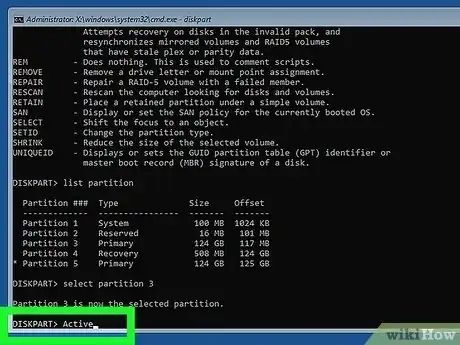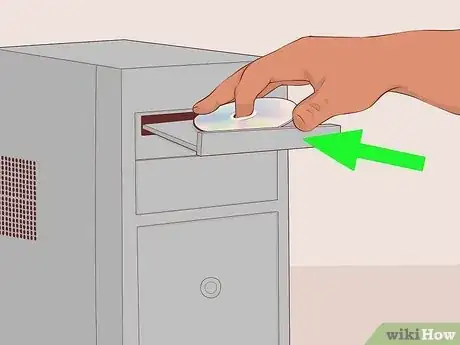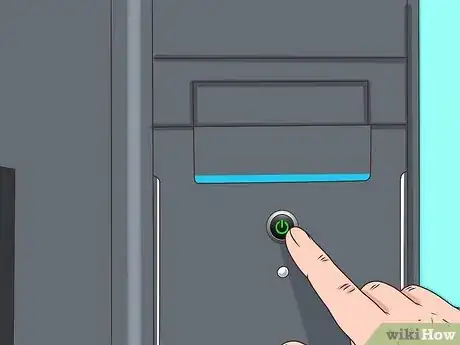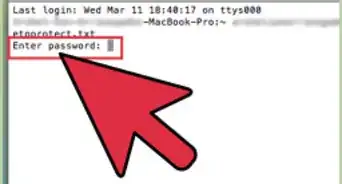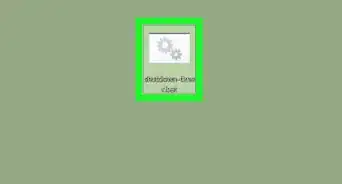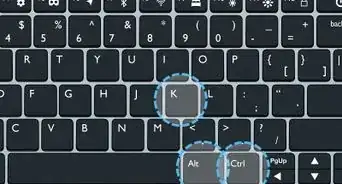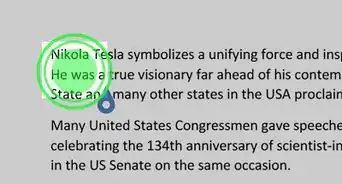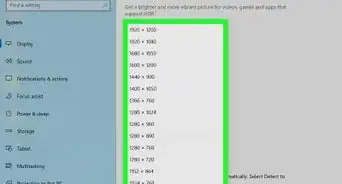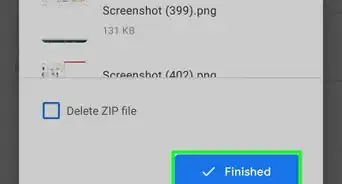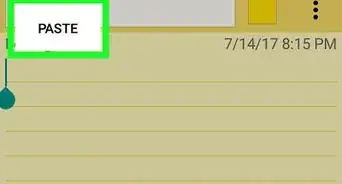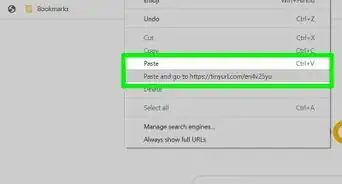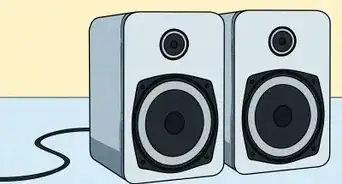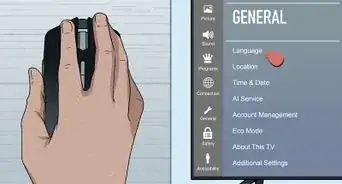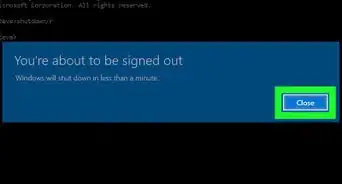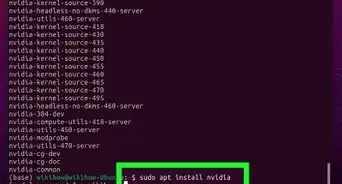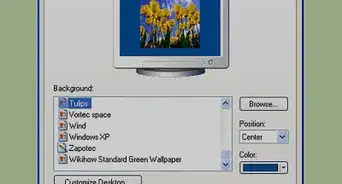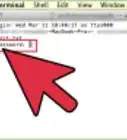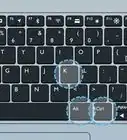This article was co-authored by Matt Ham and by wikiHow staff writer, Cory Stillman. Matt Ham is a Computer Repair Specialist and the CEO and President of Computer Repair Doctor. With over a decade of experience, Matt specializes in Mac, PC, iPhone, iPad, and Smartphone repairs and upgrades. Matt holds a BS in Mechanical Engineering from North Carolina State University and an MS in Mechanical Engineering from Columbia University. Matt has expanded Computer Repair Doctor to seven different locations. He is also a Co-Owner of Repair Life, a full-scale marketing agency specializing in driving both online and offline leads to cell phone and computer repair shops and device retailers.
The wikiHow Tech Team also followed the article's instructions and verified that they work.
This article has been viewed 46,151 times.
Are you getting an error that says "Reboot and select proper boot device" or "insert boot media in boot device?" This ominous-sounding error prevents your PC from booting normally, but there's nearly always an easy fix. This wikiHow article teaches you how to troubleshoot insert boot media errors on any Windows PC.
Steps
Choose the Right Boot Order
-
1Remove all connected drives and/or CDs/DVDs. Before you do anything else, make sure you don't have a flash or external drive connected to the PC, and remove any CDs or DVDs from your optical drive. Then, restart your PC to see if this resolves the issue.
- If your PC boots up without removable media connected, it was trying to boot from a drive that didn't contain a bootable operating system. You can avoid this in the future by removing connected/inserted media when rebooting, or by continuing with this method to change the boot order.
- If your PC still doesn't boot, continue with this method anyway.
-
2Reboot your PC into the BIOS or UEFI. If your PC is set to boot from external media like a USB flash drive or optical disc before your hard drive, it'll check for a bootable operating system on the removable media at boot time. If it doesn't find an operating system on the removable drive, you'll be prompted to insert boot media.
- To reboot into the BIOS or UEFI, you'll need to know your PC's setup key. This key is usually F2, F8, Del, Esc, or F10.
- When you reboot your PC, press the setup key repeatedly as soon as the PC restarts. You may see a message on the PC that says "Press (setup key) to enter SETUP."
Advertisement -
3Locate the Boot, Boot Order, or Boot Sequence area. Each BIOS or UEFI is different—you'll need to browse through the menus to find this section. You may find it in a section called Advanced or System Configuration.[1]
- If your system has a UEFI, you can usually use your mouse to click and select menus and options.
- If your mouse is unavailable, use your keyboard's arrow keys to navigate, and press Enter to select options.
-
4Select your hard drive (or preferred boot device) as the first option in the boot order. If you want to boot into the version of Windows or Linux installed on your PC, select the hard drive from the device list. To boot from a removable device like a flash or external drive, choose Removable or similar.
- If your hard drive is not found, the drive itself might be disconnected from the motherboard. You will need to open your computer and check the cabling. If everything is nice and secure, it's likely your hard drive is dead.
- The steps to choose a boot order are different in each BIOS. You may have to manually reorder all devices by selecting them and using the arrow keys to move them up or down. Sometimes you'll have to choose 1st and select a device.
- The device you set as first in the boot order will be the first drive your PC boots from each time you turn it on.
- If you set a removable drive or CD/DVD as first in the boot order, you can still boot into the operating system installed on your hard drive—just be sure to disconnect the removable media or remove the CD/DVD when rebooting.
-
5Disable Legacy Mode. Depending on your BIOS or UEFI, you may see an option called Legacy Mode or Legacy Boot. It could be in the Boot Order section, but it may also be in another menu. Browse around for a "Legacy" option, and choose the alternative option, such as UEFI or Secure.
-
6Save your changes and exit. You'll usually need to press F10 or choose Save to save your changes and exist. The specific key you'll need to use usually appears at the bottom of the BIOS screen. Once your changes are saved, your PC will reboot from the selected device.
Run a Startup Repair
-
1Boot your PC from a Windows installation or recovery disc/drive. As long as you have access to bootable installation or recovery media, you can easily perform additional troubleshooting tasks, including running a startup repair.
- If you don't have the original Windows DVD or a bootable repair disc, you can create a bootable install drive using any working PC.
- To boot from a bootable drive or DVD, you'll need to go back into the UEFI or BIOS to make your removable or optical drive first in the boot order.
- Insert the install or recover media, reboot your PC, and follow any on-screen instructions to boot from the installed media.
-
2Click Repair your computer on the Windows screen. This takes you to a blue screen with several options.
-
3Click Troubleshoot. Another set of options will appear.
-
4Click Advanced options. It's at the bottom of the screen.
-
5Click Startup Repair. This may be called Automatic Repair on some PCs.
-
6Click Restart. Windows will now attempt to repair the boot issue. Follow any on-screen instructions that appear when the process is complete to reboot your PC. If Startup Repair is able to fix the issue, you'll now be able to boot into the operating system.[2]
Repair the Boot Record
-
1Boot your PC from a Windows installation or recovery disc/drive. If setting your partition as active didn't resolve the problem or you're now getting different boot errors, you might need to rebuild the master boot record. Reboot your PC using Windows installation or recovery media.
- If you don't have the original Windows DVD or a bootable repair disc, you can create a bootable install drive using any working PC.
-
2Click Repair your computer on the Windows screen. This takes you to a blue screen with several options.
-
3Click Troubleshoot. Another set of options will appear.
-
4Click Command Prompt. This opens a Windows command prompt.
-
5Type the following commands to rebuild the boot record. Once you've typed all of these commands, continue to the next step.[3]
- Type bootrec /FixMbr and press Enter.
- Type bootrec /FixBoot and press Enter.
- Type bootrec /ScanOs and press Enter.
- Type bootrec /RebuildBcd and press Enter.
-
6Remove your installation or recovery media. Before you reboot, you'll want to make sure your Windows installation disc or drive is no longer connected to the PC.
-
7Restart your PC. This will hopefully resolve the issue.
- You can now set the boot order back to your hard drive being the primary boot device.
Fix Partition Issues
-
1Boot your PC from a Windows installation or recovery disc/drive. If you've partitioned your hard drive, your primary partition may not be set as active. You can fix partition issues by booting with a Windows installation or recovery DVD or flash drive.
- If you don't have the original Windows DVD or a bootable repair disc, you can create a bootable install drive using any working PC.
- To boot from a bootable drive or DVD, you'll need to go back into the UEFI or BIOS to make your removable or optical drive first in the boot order.
- Insert the install or recover media, reboot your PC, and follow any on-screen instructions to boot from the installed media.
-
2Click Repair your computer on the Windows screen. This takes you to a blue screen with several options.
-
3Click Troubleshoot. Another set of options will appear.
-
4Click Command Prompt. This opens a Windows command prompt.
-
5Type diskpart and press ↵ Enter. This activates the Diskpart tool.
-
6Type list disk and press ↵ Enter. This displays all hard drives installed in your PC.
-
7Type select disk (number) and press ↵ Enter. Choose the number of the drive on which you've installed Windows, e.g., select disk 0 or select disk 1.
-
8Type list partition and press ↵ Enter. This displays all partitions on the selected drive.
-
9Type select partition (number) and press ↵ Enter. This time, choose the number of the partition on which Windows is installed, e.g., select partition 0 or select partition 1.
-
10Type active and press ↵ Enter. This sets the selected partition as active.
-
11Remove your installation or recovery media. Before you reboot, you'll want to make sure your Windows installation disc or drive is no longer connected to the PC.
-
12Restart your PC. This will hopefully resolve the issue.
- You can now set the boot order back to your hard drive being the primary boot device.
Expert Q&A
-
QuestionWhat does it mean to insert boot media?
 Matt HamMatt Ham is a Computer Repair Specialist and the CEO and President of Computer Repair Doctor. With over a decade of experience, Matt specializes in Mac, PC, iPhone, iPad, and Smartphone repairs and upgrades. Matt holds a BS in Mechanical Engineering from North Carolina State University and an MS in Mechanical Engineering from Columbia University. Matt has expanded Computer Repair Doctor to seven different locations. He is also a Co-Owner of Repair Life, a full-scale marketing agency specializing in driving both online and offline leads to cell phone and computer repair shops and device retailers.
Matt HamMatt Ham is a Computer Repair Specialist and the CEO and President of Computer Repair Doctor. With over a decade of experience, Matt specializes in Mac, PC, iPhone, iPad, and Smartphone repairs and upgrades. Matt holds a BS in Mechanical Engineering from North Carolina State University and an MS in Mechanical Engineering from Columbia University. Matt has expanded Computer Repair Doctor to seven different locations. He is also a Co-Owner of Repair Life, a full-scale marketing agency specializing in driving both online and offline leads to cell phone and computer repair shops and device retailers.
Computer Repair Specialist It means that your computer can't find the hard drive it needs to load the operating system. That's basically the short of it.
It means that your computer can't find the hard drive it needs to load the operating system. That's basically the short of it. -
QuestionWhy would my computer keep asking me to insert boot media?
 Matt HamMatt Ham is a Computer Repair Specialist and the CEO and President of Computer Repair Doctor. With over a decade of experience, Matt specializes in Mac, PC, iPhone, iPad, and Smartphone repairs and upgrades. Matt holds a BS in Mechanical Engineering from North Carolina State University and an MS in Mechanical Engineering from Columbia University. Matt has expanded Computer Repair Doctor to seven different locations. He is also a Co-Owner of Repair Life, a full-scale marketing agency specializing in driving both online and offline leads to cell phone and computer repair shops and device retailers.
Matt HamMatt Ham is a Computer Repair Specialist and the CEO and President of Computer Repair Doctor. With over a decade of experience, Matt specializes in Mac, PC, iPhone, iPad, and Smartphone repairs and upgrades. Matt holds a BS in Mechanical Engineering from North Carolina State University and an MS in Mechanical Engineering from Columbia University. Matt has expanded Computer Repair Doctor to seven different locations. He is also a Co-Owner of Repair Life, a full-scale marketing agency specializing in driving both online and offline leads to cell phone and computer repair shops and device retailers.
Computer Repair Specialist There could be any number of reasons for this. It can really depend on the setup of the machine and the BIOS settings. It could also be that your machine has been set up to not boot from the hard drive anymore, but that's a pretty rare case. More often than not, this happens when the hard drive is physically damaged.
There could be any number of reasons for this. It can really depend on the setup of the machine and the BIOS settings. It could also be that your machine has been set up to not boot from the hard drive anymore, but that's a pretty rare case. More often than not, this happens when the hard drive is physically damaged.
